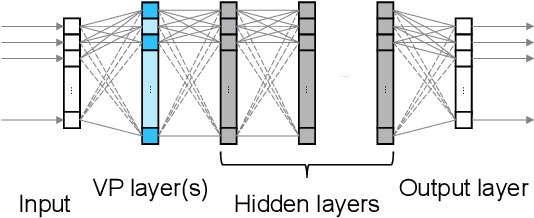Gergő Bognár
Transformer Encoder and Multi-features Time2Vec for Financial Prediction
Apr 18, 2025Abstract:Financial prediction is a complex and challenging task of time series analysis and signal processing, expected to model both short-term fluctuations and long-term temporal dependencies. Transformers have remarkable success mostly in natural language processing using attention mechanism, which also influenced the time series community. The ability to capture both short and long-range dependencies helps to understand the financial market and to recognize price patterns, leading to successful applications of Transformers in stock prediction. Although, the previous research predominantly focuses on individual features and singular predictions, that limits the model's ability to understand broader market trends. In reality, within sectors such as finance and technology, companies belonging to the same industry often exhibit correlated stock price movements. In this paper, we develop a novel neural network architecture by integrating Time2Vec with the Encoder of the Transformer model. Based on the study of different markets, we propose a novel correlation feature selection method. Through a comprehensive fine-tuning of multiple hyperparameters, we conduct a comparative analysis of our results against benchmark models. We conclude that our method outperforms other state-of-the-art encoding methods such as positional encoding, and we also conclude that selecting correlation features enhance the accuracy of predicting multiple stock prices.
Neural Network Approaches for Data Estimation in Unique Word OFDM Systems
Nov 11, 2022Abstract:Data estimation is conducted with model-based estimation methods since the beginning of digital communications. However, motivated by the growing success of machine learning, current research focuses on replacing model-based data estimation methods by data-driven approaches, mainly neural networks (NNs). In this work, we particularly investigate the incorporation of existing model knowledge into data-driven approaches, which is expected to lead to complexity reduction and / or performance enhancement. We describe three different options, namely "model-inspired'' pre-processing, choosing an NN architecture motivated by the properties of the underlying communication system, and inferring the layer structure of an NN with the help of model knowledge. Most of the current publications on NN-based data estimation deal with general multiple-input multiple-output communication (MIMO) systems. In this work, we investigate NN-based data estimation for so-called unique word orthogonal frequency division multiplexing (UW-OFDM) systems. We highlight differences between UW-OFDM systems and general MIMO systems one has to be aware of when using NNs for data estimation, and we introduce measures for successful utilization of NN-based data estimators in UW-OFDM systems. Further, we investigate the use of NNs for data estimation when channel coded data transmission is conducted, and we present adaptions to be made, such that NN-based data estimators provide satisfying performance for this case. We compare the presented NNs concerning achieved bit error ratio performance and computational complexity, we show the peculiar distributions of their data estimates, and we also point out their downsides compared to model-based equalizers.
VPNet: Variable Projection Networks
Jun 28, 2020


Abstract:In this paper, we introduce VPNet, a novel model-driven neural network architecture based on variable projections (VP). The application of VP operators in neural networks implies learnable features, interpretable parameters, and compact network structures. This paper discusses the motivation and mathematical background of VPNet as well as experiments. The concept was evaluated in the context of signal processing. We performed classification tasks on a synthetic dataset, and real electrocardiogram (ECG) signals. Compared to fully-connected and 1D convolutional networks, VPNet features fast learning ability and good accuracy at a low computational cost in both of the training and inference. Based on the promising results and mentioned advantages, we expect broader impact in signal processing, including classification, regression, and even clustering problems.
 Add to Chrome
Add to Chrome Add to Firefox
Add to Firefox Add to Edge
Add to Edge